Uçhisar is a town (belde) in the Nevşehir District, Nevşehir Province in Cappadocia, Turkey. Its population is 3,555 (2022). It is 7 kilometres east of Nevşehir, 12 kilometres west of Ürgüp, and 10 kilometres south of Avanos.
Situated on the edge of Göreme National Park, Uçhisar consists of an old village huddled around the base of a huge rock cone and a new one closer to the road that runs from Nevşehir town to Göreme. Like most of Cappadocia, Uçhisar once made a living from agriculture but now depends almost entirely on tourism, with many of its fine old stone houses turned into boutique hotels. French incomers and Turks returning from France have played a large part in the move to convert the houses into hotels.
Uçhisar means 'Outer Citadel' in Turkish and refers to the huge rock cone that is its central feature.
The Güvercinlik Valley that overlooks Uçhisar was known as Vasil Potamus or Vasilius (Basilius, named after St. Basil) in antiquity....Read more
Uçhisar is a town (belde) in the Nevşehir District, Nevşehir Province in Cappadocia, Turkey. Its population is 3,555 (2022). It is 7 kilometres east of Nevşehir, 12 kilometres west of Ürgüp, and 10 kilometres south of Avanos.
Situated on the edge of Göreme National Park, Uçhisar consists of an old village huddled around the base of a huge rock cone and a new one closer to the road that runs from Nevşehir town to Göreme. Like most of Cappadocia, Uçhisar once made a living from agriculture but now depends almost entirely on tourism, with many of its fine old stone houses turned into boutique hotels. French incomers and Turks returning from France have played a large part in the move to convert the houses into hotels.
Uçhisar means 'Outer Citadel' in Turkish and refers to the huge rock cone that is its central feature.
The Güvercinlik Valley that overlooks Uçhisar was known as Vasil Potamus or Vasilius (Basilius, named after St. Basil) in antiquity.
Uçhisar was first mentioned in a 14th-century chronicle by Aziz ibn Ardasir although the general area had been occupied from much earlier, perhaps from Hittite times. In the seventh century AD, the Byzantines created a 'buffer zone' in the area against Islamic expansion. The nature of the terrain was conducive to defence, while the camouflage of the buildings provided an improved defence against attackers.
After their conquest of the region, the Selçuks also made use of the defensive possibilities of the area, creating small centres with caravanserais in the region.[1]
In 2000 a German woman called Evelyn Kopp bought a house in old Uçhisar and later published a book about the village, its history and traditions called Uçhisar Unfolding: The Many Faces of a Cappadocian Village.[2]


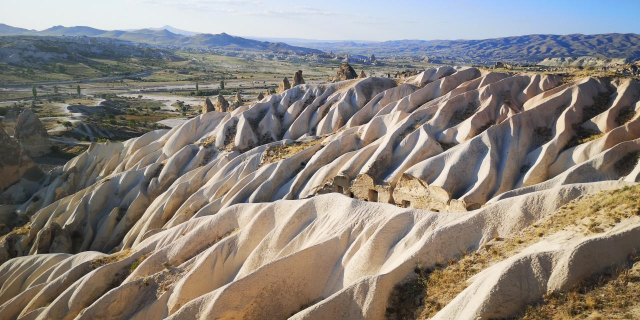




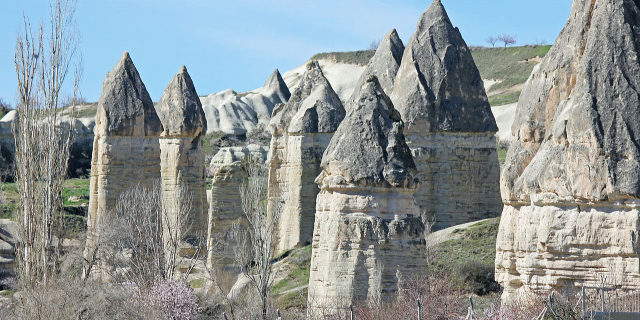



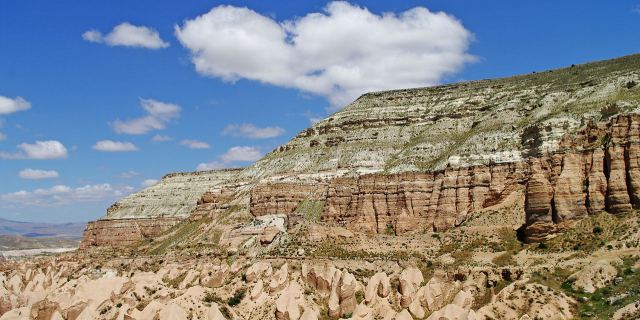

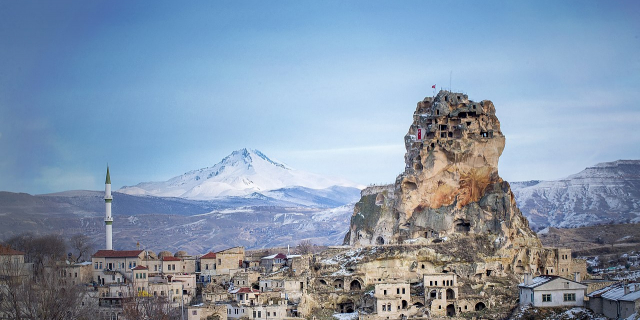

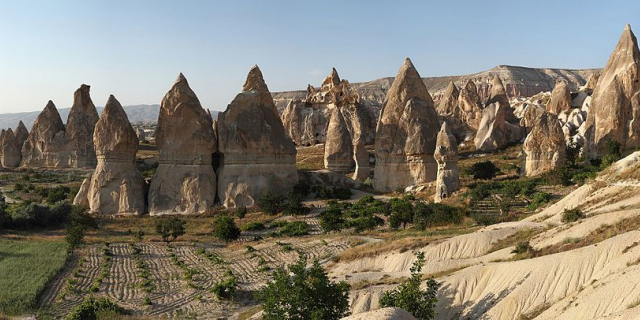





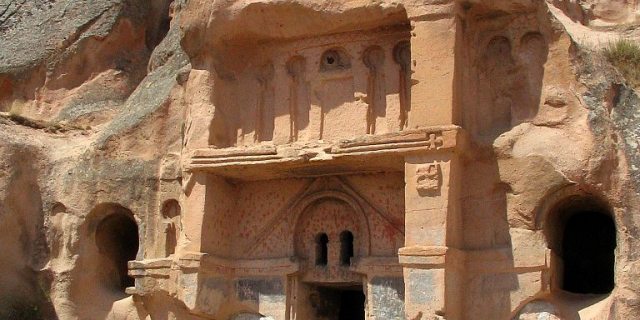


Add new comment